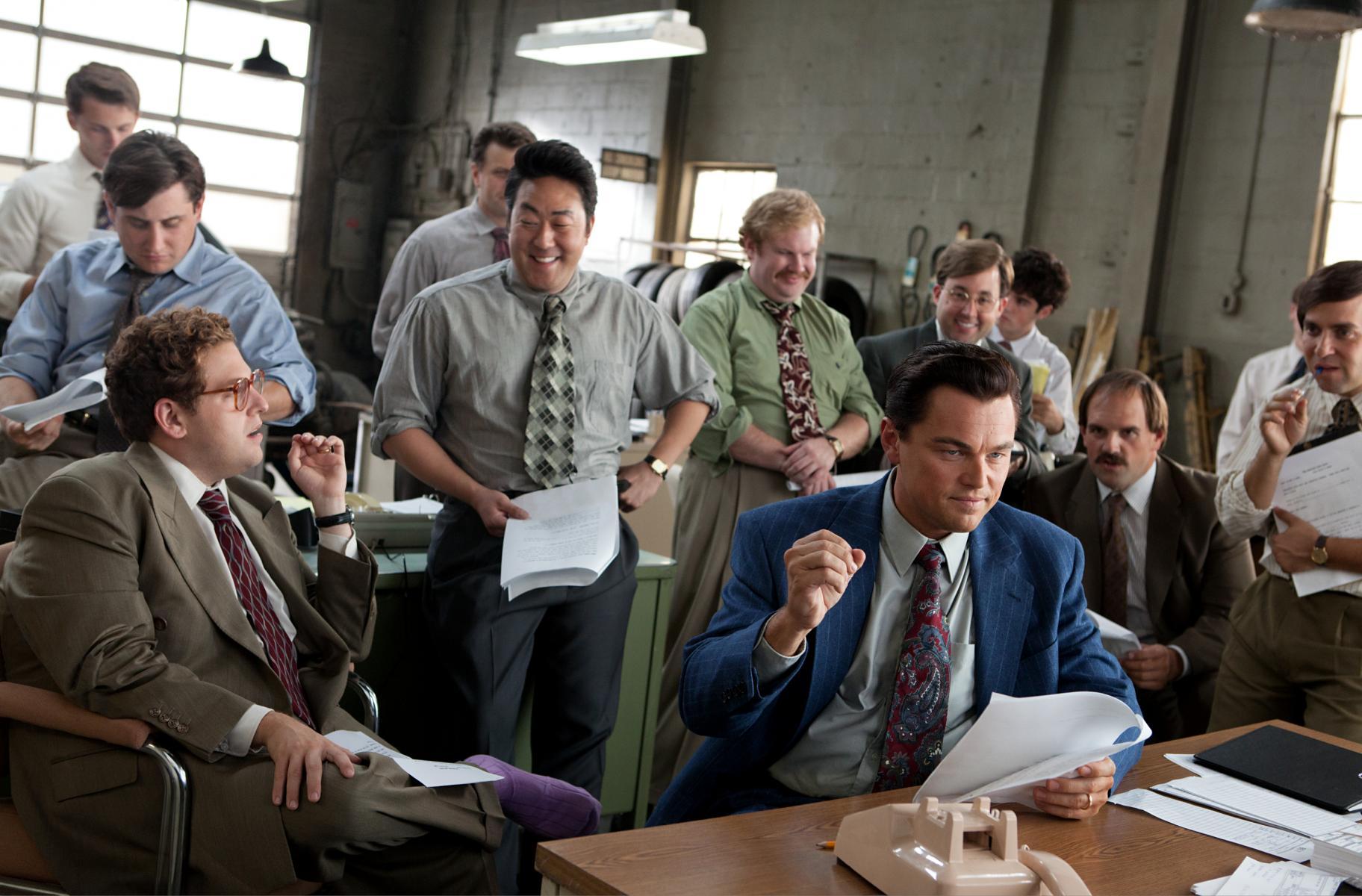By Chilimovie - 22 July 2021

Through the new work The Wolf of Wall Street, Martin Scorsese once again put himself on the cusp of public opinion. This film neither allows us to learn more about the financial shady on Wall Street, nor does it intend to make any moral judgments on the protagonist of the film. The point is that through this film, we can not only truly enter the psychological world of Belfort, but also better see the environment that supports his success.
As we all know, Jordan Belfort (Leonardo DiCaprio), the protagonist of The Wolf of Wall Street, was a Wall Street stock broker who was active in the 1990s. He has served two years in prison for several counts of economic fraud and stock price manipulation, but the cost is not high compared to his extravagant life in previous years. The film spends most of its time on expressing Belfort's chaotic life, and Scorsese, who has been serious and serious in recent years, seems to have recovered his long-lost vitality when filming these passages. The restless camera movement, the rush of the film rhythm, the violent interruption and flashback, as well as the blood-laden narration and original soundtrack, can make the audience immerse in the life atmosphere of Belfort while watching the movie. , And Scorsese’s laugh and curse on the protagonist in the film can recall the vivid depiction of the corrupt nightlife in Berlin during the Weimar era by the German expressionist painter George Groz.
However, the visual appearance that Scorsese chose for The Wolf of Wall Street is completely different from Groz's crazily distorted expressionist approach. The lighting and composition of "The Wolf of Wall Street" are very flat and regular. This visual strategy is related to Scorsese's replacement of photographers-he did not use Robert Richardson, his most commonly used photographer in recent years. Instead, he chose to collaborate for the first time with Mexican photographer Rodríguez Prito, who had been in charge of films such as The 25th Hour and Escape from Tehran. Martin's choice is in line with the film's deep logic: Pretto's naturalistic tone is clearly different from Richardson's pursuit of strong contrast, which corresponds to Belfort and Teddy Daniels (Closed Island). The hero) or Howard Hughes (the Aviator hero). Unlike the latter two, Belfort has always had strong self-confidence. Even in the face of the craziest off-line situation, he still firmly believes that he can finally turn the danger into a waste, and it is true. If the strong contrast between Aviator and Closed Island is based on the protagonist's delusional perception of the surrounding environment, then the plain tone of The Wolf of Wall Street is rooted in Belfort's conviction in his environmental control. suspect.
Where does Belfort's confidence come from? The answer is simple, he can use his clever tongue to sell any product to others. In a business society, his ability is enough to allow him to grasp the opportunity to make money at all times, so even when he is behind bars, he still believes that he can make a comeback. The fuel that propels him to success is our desire for money and vanity as consumers. The beauty of Belfort is that he can always accurately hit the weakness of others. When facing employees, he would mention the poor situation of the other party before joining the company to encourage employees to work harder for him; when facing customers, he can easily see through the needs of the other party and tease them in every possible way until the customer is caught by him. Squeeze it dry; when facing a business partner, he knows how to satisfy the other’s vanity in order to get the most benefit for himself; when facing the federal agent Patrick (Kyle Chandler) who came to investigate him In a few words, he aroused Patrick's dissatisfaction with his income level and social status, and almost let this conscientious opponent fall into his trap. Like a poisonous snake, he keeps tempting people to pay for the values he sells. What's more frightening is that people often cannot refuse his offer.
The layers of controversy caused by The Wolf of Wall Street actually reflect the ambivalence of the public when facing Belfort. Many public opinions and audiences believe that Scorsese is beautifying Belfort in the film, but the paradox is that the reason why these viewers can feel the personal charm of Belfort is precisely because they are also being Tempted by Belfort's lifestyle. In an interview, Scorsese mentioned that he had hesitated to take over the film because of the similarity of the theme of the film to Good Guy and Lady from Casino. Later, he realized that he wanted to break through the two previous titles. You must use Belfort's perspective as the entry point into the world of film. Since we want to understand what the wolf of Wall Street thinks, it is impossible for us to avoid the risk of being seduced by his life, and Scorsese did not make any moral judgments of Belfort, he was just trying his best The whole life of Belfort is truly presented, and the final judgment is left to the audience.
In the closing paragraph, The Wolf of Wall Street tears off Belfort's last fig leaf: In order to seek a reduction of his sentence, he betrayed all the business partners he had worked with, and lost the last trace of his credit. Ironically, the successful agent Patrick would remember what Belfort had said to him on the way home on the subway, and Belfort could continue to earn considerable income from the public by teaching sales skills after being released from prison. When Belfort was instructing everyone on how to sell a pen in the final scene of the film, the faces of the audience still showed their hunger for the fame and fortune represented by Belfort; however, we, as movie audiences, really Willing to pay for the values he promotes like the countless victims of Belfort? Scorsese remained silent. Everything is up to us to decide.


